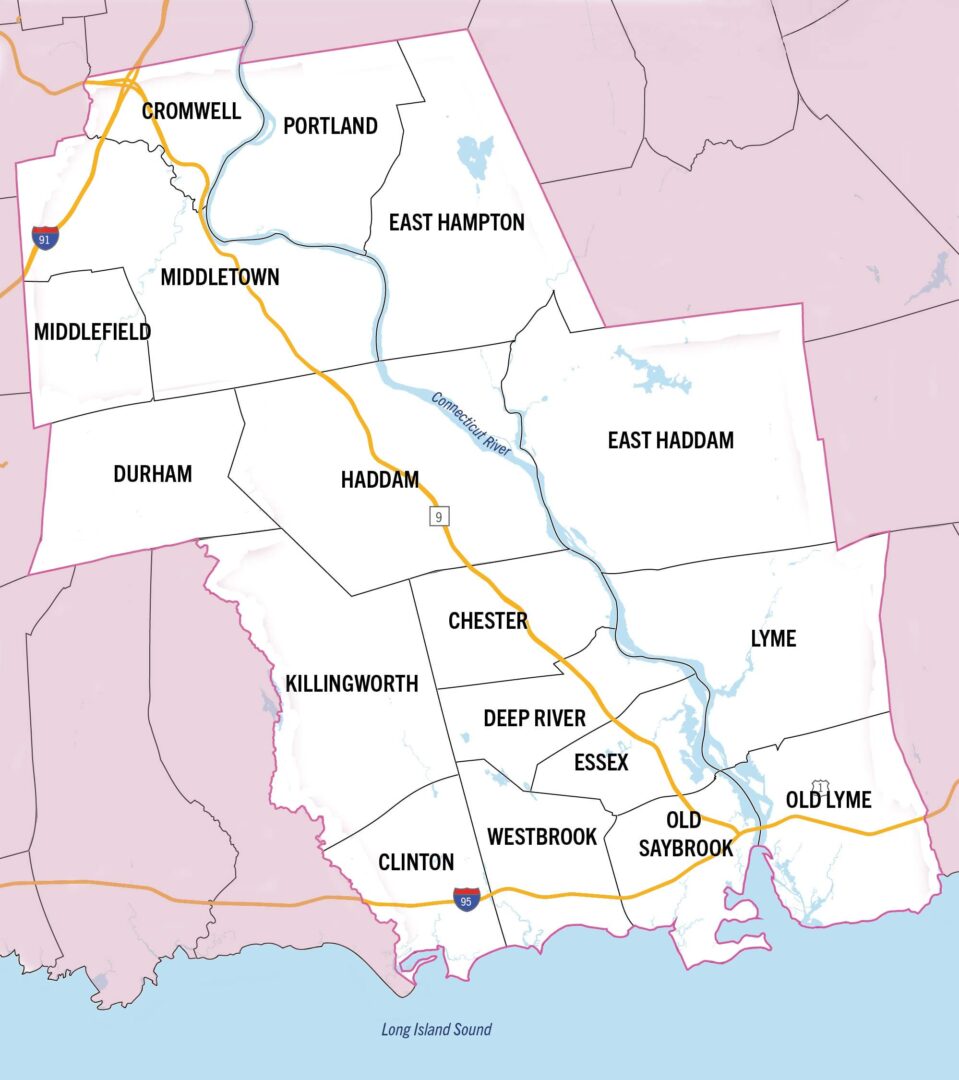ESSEX — The Lower Connecticut River Valley Council of Governments, commonly known as RiverCOG, one of nine regional planning organizations across the state, is beginning the process of creating the organization’s first Regional Plan of Conservation and Development. The council will provide an introductory presentation on the project Monday night at 7 p.m. via zoom and the meeting will be open to the public.
“What we’re looking for is to get the public’s input. On Monday night, we want to introduce them to the process of how this works… when I say the public, I mean the public at large, the land use commissions, the inland wetlands commission, the historic district commission, et cetera,” explained Frank DeFelice, chair of the council’s Regional Planning Committee, made up of appointed representatives from each of the council’s 17 municipalities.
One of the potential benefits of the regional plan will be to help the member municipalities to reduce operating costs by regionalizing services, said DeFelice.
The Regional Plan of Conservation and Development, known as an RPOCD, will be “a visionary document that identifies the challenges facing the region over the next decade and recommends actions for our communities to take to address them,” according to the project website.
“The idea here is to create a plan that will provide recommendations for towns to work together to address bigger issues that are better addressed on a regional level rather than on an individual town level,” said Sam Gold, executive director of RiverCOG.
The planning will address demographic challenges in the state and region, including an aging population and its future needs for services to age in place. The planning process will also address the need to attract younger residents who can volunteer for emergency services and provide children for the schools.
“But the bigger picture is not every town can do everything,” said Gold. “Towns have different roles in the region — some town are rural residential, others are more of our commercial hubs and where our institutions are,” said Gold. “There’s value in looking at the towns on a regional scale and seeing what opportunities exist to work together on issues … especially in our region where we have limited infrastructure for sewer and public water, you really can’t accommodate all types of elements in all places. If your town doesn’t have sewers, it’s difficult to build a lot of apartments. It is possible, you can have good soils in some places, but it’s a challenge that we have in the southern part of our region.”
Gold explained that while RiverCOG has an advisory role, the individual towns should be part of the planning process, because it is the responsibility of each town to implement a land use policy.
“We can create our own plan in a bubble and have nothing to show for it after 10 years because the people with the power to implement don’t take ownership,” Gold said. “So the idea here is for this not to just be RiverCOG’s plan, it’s to be the region’s plan which means the land use commissions need to feel represented in it.”
RiverCOG has hired Fitzgerald & Halliday, Inc. as consultants to the project, funded out of a $406,000 Regional Services Grant.

“One important thing is that in preparation for this, because this is a regional plan, we’ve read everyone’s POCDs — all 17 of them — and what we’ve discovered in that process is that the towns share much more in common than what’s different. Their commonalities and goals and issues cross municipal boundaries,” said Gold.
Once the regional planning committee meets with all 17 towns, DeFelice said that they will begin assembling the plan.
“We look at existing conditions — what land is conserved, what land is developed — and we put together a plan for 10 years and more, which will make recommendations as to which lands are best suited for development, which lands are best suited for conservation,” he said. “And there’s another component, which is not totally land use, it’s more like quality of life in our region. What is special about our region? If you were to do a tourism brochure what questions would you ask? You’d say we have the Essex Steam Train and we have agriculture and we have all these great things, hiking trails, culture, old buildings, history.”
Register for Monday’s zoom meeting here.

